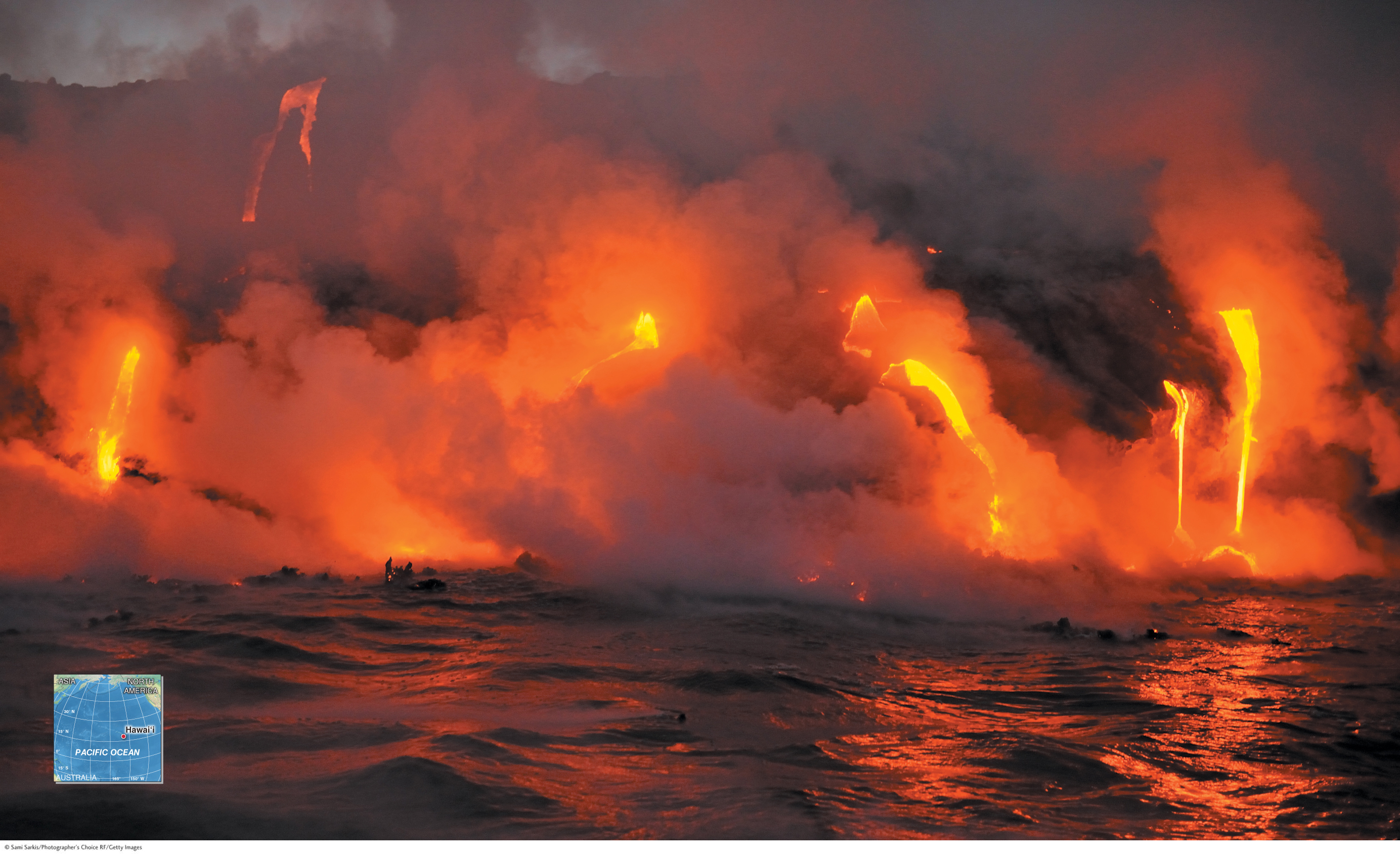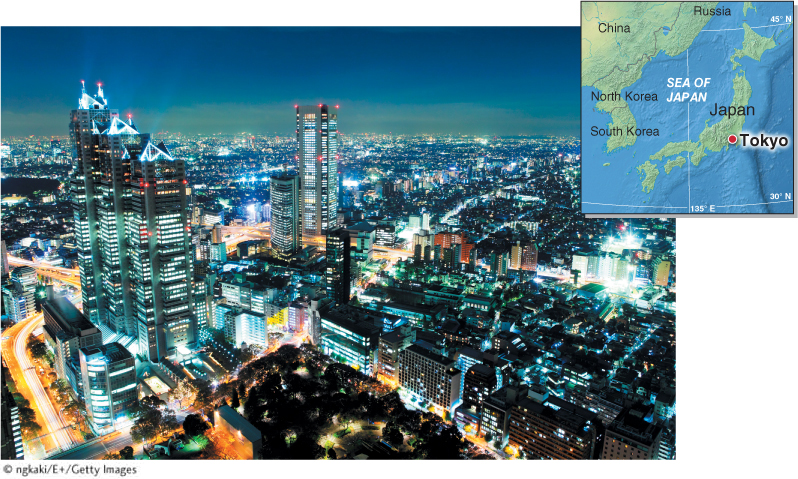Earth History, Earth Interior
11

LIVING PHYSICAL GEOGRAPHY
How did Earth form?
How did the atmosphere and oceans form?
Why doesn’t the hot interior of Earth melt the crust?
How long would it take to drive to the center of Earth?
THE BIG PICTURE
Earth formed 4.6 billion years ago. The planet’s hot interior is structured in layers. Heat energy moves Earth’s hot interior and its outer crust.
LEARNING GOALS
After reading this chapter, you will be able to:
11.1
Explain the origin of Earth and its atmosphere and oceans.
11.2
Describe the major divisions of geologic time and explain how the age of ancient Earth material is determined.
11.3
Describe the planet’s internal structure and understand the importance of lithospheric plate movement.
11.4
Assess the connection between Earth’s internal heat and life on Earth.
THE HUMAN SPHERE:
The Anthropocene
THERE ARE JUST OVER 7 BILLION PEOPLE ON EARTH TODAY, and by midcentury, there will likely be about 9 billion. No other single species in Earth’s history has been such a pervasive force of change in Earth’s physical systems as humans are now.
Many scientists believe that the extent of human environmental impacts is sufficient to warrant a new geologic epoch in Earth history. This new epoch, called the Anthropocene, or the “Age of Humans,“is the age of human transformation of Earth’s physical systems (Figure 11.1).

Anthropocene
(pronounced an-
The beginning of the Industrial Revolution, around 1800, is often cited as the beginning of the Anthropocene. At that time, human activity began changing the chemistry of the atmosphere. Atmospheric carbon dioxide levels began rising as people burned coal, and then petroleum, for energy (see Section 6.3). The increased concentration of CO2 in the atmosphere led to an anthropogenic greenhouse effect. Atmospheric warming has caused sea level to rise about 20 cm (8 in) in the last century as Earth’s ice sheets and glaciers have melted and seas have warmed and expanded (as we will see in Section 17.5). In addition, the oceans are becoming more acidic as they absorb CO2 from the atmosphere (see Section 10.1).
Many of the world’s major rivers have been dammed, and about half the world’s freshwater runoff is used by people. Nearly 40% of Earth’s land surface not covered by glaciers is used to grow food for people. Globally, people move more sediment and rock using bulldozers and other earth-
The proposed Anthropocene is one of many divisions of geologic time that mark Earth’s extensive history. This chapter investigates how Earth was formed, how scientists divide Earth’s history into geologic time periods, and how Earth’s interior is structured. This chapter also explores the connection between the planet’s internal heat energy and the biosphere.